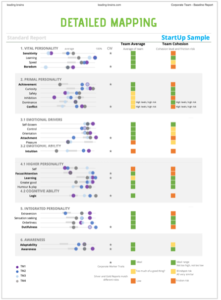Before the pandemic conspiracy theories, particularly in the USA were running at a high, or seemingly at least. These have increased with the pandemic fuelling many conspiracy theories many directly related to the pandemic. Some of these are bizarre to the extreme but even reasonable people seem to be falling for many of these theories – so just what is happening in the brains of these people and how can we explain this increase in conspiracies?

At the time of writing, in March 2021, conspiracy theories seem to have become mainstream particularly in the USA (admittedly they have always loved a conspiracy or two). But obviously also with the pandemic still raging, admittedly also fading, conspiracies have raised their ugly head again, from the origins of the virus, to the intention behind it. For example, a contact of mine on LinkedIn recently posted a link to an article suggesting that the virus was part of a conspiracy to bankrupt businesses to bring in an age of Marxism. Yup really, and yup, on LinkedIn which is normally a lot more reasonable and rational than say Facebook. I for the life of me can’t see why bankrupting restaurants and theatres and enabling banks and big tech to profit (i.e. hardcore capitalists) will ring in an age of Marxism.
But more worryingly than the odd conspiracy theorist on any social media channel, which have always existed, is the sheer scale and number of people involved in these, and that some of these seem to be going mainstream. Obviously social media has acted as a giant turbocharger for many of these, but people still have to believe in them and that’s what gets me interested. What is happening in these people’s heads? Are their brains different? Or are these just natural mechanisms at play? Much like obesity which is driven by a natural desire for high calorie food, which enables survival in the wild, but has tragic consequences in modern society with a surplus of cheap easily accessible high-calorie food.
The answer is there is a lot going on! So, let’s dive in, if you have a few minutes, and uncover exactly what is going on psychologically and biologically.
“And the things that correlated most strongly with conspiracy theories were things like believing in supernatural or paranormal phenomena and then that’s what got us interested in magical thinking and realizing that, oh well conspiracy theory seems to be similar to these things and it’s a form of magical thinking”
Surprisingly common
First off there are a lot of people who believe in conspiracy theories – most research say that at least 50% of the population of the US believes in at least one. And I confess I have believed in a few in my time but have become ever less conspiracy-like over the years as I have grown in wisdom (kind of) and been exposed to multiple experiences of how the world works and doesn’t and read wide and far on multiple topics – but especially on starting to understand complex system dynamics.
So, we can see that conspiracy theories are not uncommon – indeed they have always been a part of our daily lives. The question we can’t answer yet is are they becoming more extreme and irrational. JFK and Roswell are not that extreme. It’s is not that wild to think that there would be a secret plot to kill the president – many a president has been assassinated in the world. Similarly covering up UFOs is not such a wild concept. However, the current Q-Anon theory that democrats are run by a secret ring of paedophiliacs is bizarre to the extreme and stretches the imagination to extremes – who could actually think this up?!
This brings us on to another pretty obvious point.
Partisanship
When it comes to partisan issues, we are all much more conspiracy-minded than we might like to think. In the USA there are strong partisan divides on certain theories – the most obvious recent ones are that the US election in 2020 wasn’t fair (no surprise majority of Republicans believe this) and the extent of Russian influence in the 2016 election (no surprise Democrats overestimate this).
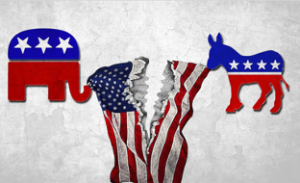 Similarly, go to any sports match and if the referee makes an unpopular decision against a team their fans will not take long to suggest that he was paid off by the opposing team or some variation of that. When things don’t go our way, we tend to see evil intentions and manipulative forces at play. But even here we could argue that that is only in some persons and in some sports. A point to note here is that these conspiracy theories vary in extremes. Believing that the oil industry is trying to sabotage green energy initiatives is probably reasonably close to the truth, believing that the world is led by a few super rich families further from the truth, believing that the earth is flat defies all sorts of logic and sensory input (you can see the earth’s curvature in a commercial airliner), and believing that the world’s elite are alien lizard creatures in human disguise requires extreme levels of fantastical thinking.
Similarly, go to any sports match and if the referee makes an unpopular decision against a team their fans will not take long to suggest that he was paid off by the opposing team or some variation of that. When things don’t go our way, we tend to see evil intentions and manipulative forces at play. But even here we could argue that that is only in some persons and in some sports. A point to note here is that these conspiracy theories vary in extremes. Believing that the oil industry is trying to sabotage green energy initiatives is probably reasonably close to the truth, believing that the world is led by a few super rich families further from the truth, believing that the earth is flat defies all sorts of logic and sensory input (you can see the earth’s curvature in a commercial airliner), and believing that the world’s elite are alien lizard creatures in human disguise requires extreme levels of fantastical thinking.
So, is there a conspiracy personality?
Well yes, and no. There are certainly plenty of personality traits that contribute to susceptibility to conspiracy beliefs. Let’s review the ones that researchers have uncovered before coming to some more recent research which has given us a better grip on this:
-
- Low Sense of Control
Those feeling less in control and normally of lower socioeconomic status tend to see wicked machinations of those higher up in society or in power. Moreover, Adam Galinsky showed that reducing people’s feeling of control in lab settings, increased their illusory pattern detection.
- See world as bad place
This is one that has been well-researched, and we go into more detail below. Obviously, you would need to see the world as a bad place to believe such conspiracy theories where people in general have negative motives rather than positive motives.
- Detect agency
They see agency, intentionality, in random patterns or complex systems.
- (Illusory) Pattern detection
This has been well-researched, see later, and is a common theme amongst conspiracy theorists reporting on seeing patterns in all sorts of random events. An article on the New York Times reports on Q-Anon believer who describes herself as excellent at seeing patterns.
- Less analytical
This may be obvious as analytical thinkers may more readily see their own logical fallacies.
- Rely on heuristics
Heuristics are our brain’s short cuts to making decisions. These rely on simple but often over-simple mechanisms and are the roots of many of our biases.
- Religious worldviews
Religiosity has many facets that could contribute to conspiracy theories – beliefs in invisible forces, things happen for a reason, for example.
- Bullshit receptivity
Well I just love this term and that researchers do us this as a term in academic papers. Yup, good ‘ole gullibility.
- Inferred motives /meaning
This is similar to some of the above but refers to seeing or reading motives into people’s actions and events in the world. Sometimes also called false attribution – notable is that drinking alcohol leads to some people increasing their false attributions, seeing intentionality in random events such as accidentally bumping into people (and yes, that was actually one experiment by researchers).
- Pessimistic
Yes, having a pessimistic outlook on life seems to also increase susceptibility to conspiracy beliefs – probably related to some of the above and seeing the negative and malicious in events.
- Schizotypy
Schizotypy is not to be confused with schizophrenia (but this falls on the extreme end of this cluster) but is a term to describe a cluster of traits which include many of the above and notably seeing the world as a negative, malicious place and that people have malicious intentions. It is also characterised by a reduced ability to feel pleasure, a vivid imagination, and cognitive slippage – making random connections between events.
- Lonely
Being lonely has also been seen to correlate with conspiracy beliefs, what is not clear is whether it is loneliness itself or the traits that lead to loneliness contributing to conspiracy beliefs. It would also be easy to surmise that being lonely and hence distant to social interactions can lead to seeing the world as more negative and also having a lack of control as already outlined above.
- Anxious Attachment
This is one that has received relatively little attention and one that I had surmised could be involved and a paper in 2018 by Green and Douglas indeed showed a correlation to attachment styles (how we build relationships and bond with others). It was only the anxious style that showed increased propensity for conspiracy beliefs which seems logical – anxiousness leading to distrust.
- Ambiguity intolerance
The ability to deal with ambiguous situations seems to mitigate belief in conspiracy theories – it seems like conspiracy theorists cannot tolerate an ambiguous situation and therefore switch to a version of what happens – even if logically unbelievable.
- Being inauthentic
This is a recent piece of research (2020) and little known, but what Huang and Whitson showed is that being incongruent i.e. being forced to hide true emotions increased illusory pattern detection. Whether this is through cognitive load or increased stress is unclear but interesting, nevertheless.
- Being female
Sorry ladies, you came out on top when I reviewed team intelligence (lbR-2021-01) and your contributions to this, but you come out worse here. Yes, some research has shown that more women than men believe in conspiracy theories.
- Believing in another conspiracy
Probably obvious but if you believe in one, you likely believe in many. This is the strongest predictor for conspiracy beliefs because it shows you have a conspiracy worldview.
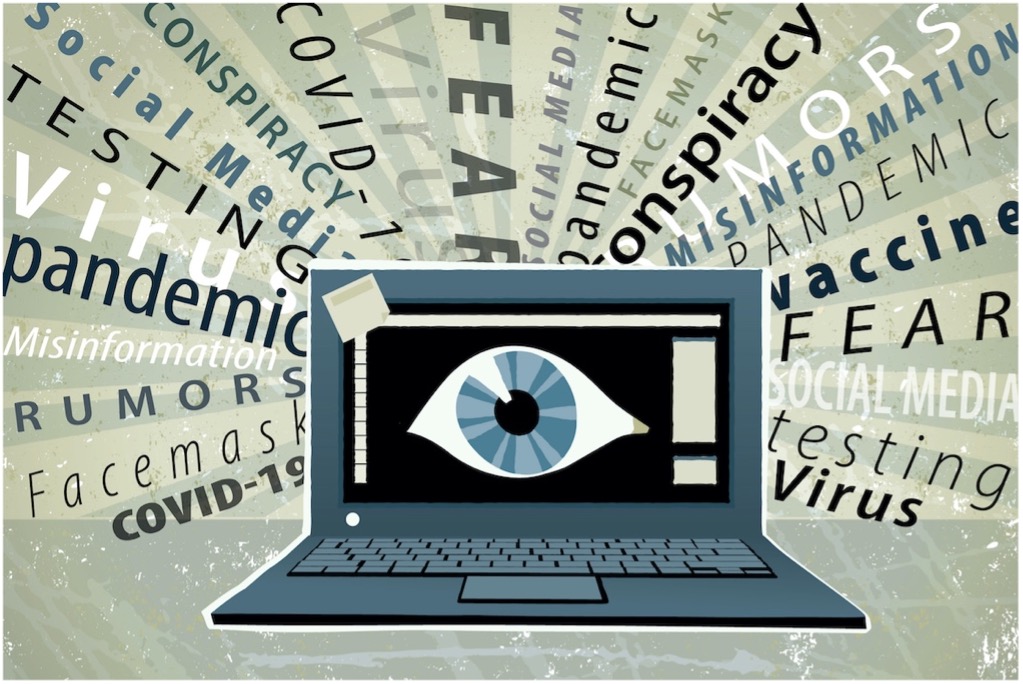
So, these are the traits and personality types that are more susceptible to believing in conspiracy theories. We can also see that many of the above are interrelated. So, is there anything that is more significant than others?
This was what Joshua Hart and Molly Graether set out to answer in 2018. They did note that many of these above-mentioned personality dispositions seem to operate independently and additively so multiple traits contribute to susceptibility and beliefs. But there were two that jumped out as being particularly and strongly significant. Schizotypy and Pattern Detection.
Schizotypy
Hart and Graether found that schizotypy had the strongest correlation to conspiracy beliefs and not pattern detection as many other researchers have pointed out, see below. This seem to be because this negative view of the world sees malicious intentions in multiple places and therefore many events can easily be interpreted as conspiracies.
Pattern Detection / Apophenia
Pattern detection has been outlined by multiple researchers as contributing to conspiracy beliefs. Apophenia is term that was coined by Swiss researcher Brugger at the start of the noughties in his research into paranormal beliefs and basically refers to pattern detection – or better formulated – illusory pattern detection. It is of interest because Brugger did a block of intensive research on this and also more interestingly for us, on the brain itself rather than just the psychological manifestations, and this has given us some clues as to the brains of those susceptible to belief in the paranormal, conspiracies, but also links to schizophrenia and hallucinations.
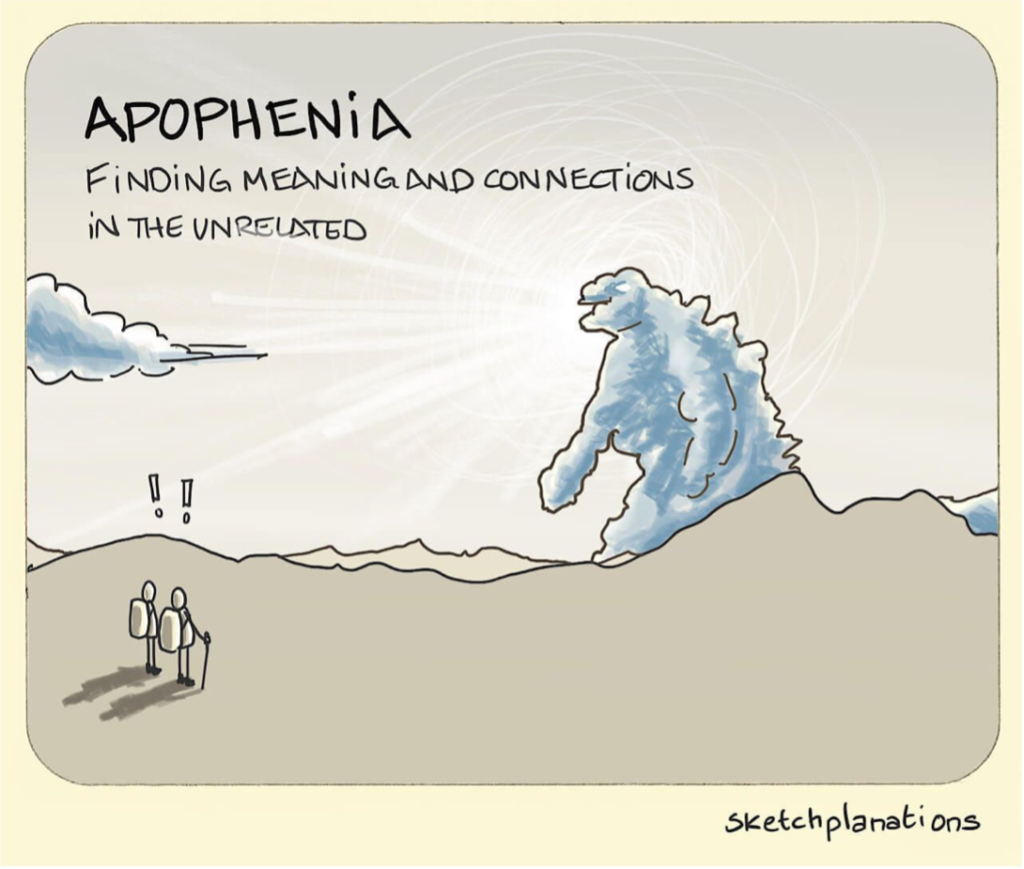
Into the brain
So the question now to ask is what is happening in the brain and do we have any evidence that the brain of conspiracy theorists is different?
The role of hemispheres: the first is a relatively simple but fascinating experiment. This was done by showing configurations of dots to participants but in this case presenting them to one hemisphere or another by only presenting them to one eye at a time. As I am sure you know, the hemispheres are actually “switched”, the right hemisphere processes input and output to the left side of the body and the left hemisphere to the right side of the body. Therefore, the researchers presented these patterns of dots to the right eye only, i.e. the left hemisphere, or to the left eye only, i.e. the right hemisphere. And lo and behold it was only the right hemisphere that interpreted patterns in the dots. This would support what we know about the right hemisphere as the one that collates the bigger information and the left as being more focused on details.
This brings the concept of left/right brain personalities back up again – a simplistic version that people like myself do not like because it has so often been falsely over simplified. But at the same time, we do have two different hemispheres for a reason, and this points clearly that those with more active or relying more so on right hemisphere functions see more patterns than those who don’t.
The role of dopamine: dopamine is a key neurotransmitter and modulator in the brain and receives quite a lot of popular press because of its role in expectation and reward. But it is also involved in much more, notably attention (see article on attention in 2021-02) and motivation also. The fascinating thing is that Brugger measured higher levels of free dopamine in those most susceptible to paranormal beliefs. This points to dopamine’s role in attention and motivation and enables seeing things as important – hence random patterns can then become meaningful and important patterns through dopamine’s influence.
The role of fear: another factor that has been identified is fear of the unknown. We have spoken and will speak often of the impact of fear on the brain. Simply, put it ramps up activity in the amygdala, and reduces cognitive power, focuses attention, and drowns out other noise.
The role of emotions: whereas fear can stimulate propensity for believing conspiracies Kaplan et al. in 2016 showed higher activation of the amygdala, and insula, which we reviewed in last issue, and embodies emotion, of people more resistant to changing their beliefs in the face of evidence.
Attention and confirmation bias: when we spoke about attention and reflection in lbR-20021-02 we spoke about 1. Turning up the volume but 2. Also turning down the noise. The brain uses these two mechanisms to keep attention focused. So, saliency of a pattern may increase the “volume” of this in the brain. This means increased attention but also the brain has others mechanism we outlined which turns down the volume of other stimuli – this means the brain does not hear or focus on other information and other information will be tuned out. The brain simply doesn’t respond to this. This is one of the mechanisms that confirmation bias operates which we will outline below – confirmation bias leads to a self-fulfilling loop of reinforcement for whatever theory an individual believes in.
Confirmation bias is the term of seeing those things you believe in and they then strengthen the case for your belief. This is controlled by the above mechanisms of attention I just outlined and is well-researched in the psychological literature. Once you believe in something, information that you come across that supports this will increase your belief, but you fail to notice evidence that counteracts your belief because the brain has turned down the volume. This leads to a self-fulfilling loop with only evidence processed that supports your theory and evidence that does not support your theory being ignored.
Confirmation bias is also the reason that more information does not help against conspiracy theories. Because of the flood of information, one’s brain only focuses on the information that one believes is correct – so more information means that there is also more false information and that each individual only follows their already formed biases.
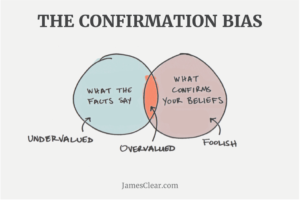
Nature’s Mechanisms
So far, we can see that there are a bunch of mechanisms at play that influence a person’s susceptibility to conspiracy theories. Notably schizotypy, pattern detection, and certain brain functions such as right hemisphere overactivation and free dopamine. The question we haven’t asked is how much natural mechanisms contribute to this? Pattern detection after all is not a strange phenomenon in conspiracy theories, pattern detection is a key human skill to be able to identify patterns in the environment and hence respond to them and make better predictions. Let’s review a few of them:
Causation
Identifying causal effects is what human beings are exceptionally good at and this is one feature of our cognitive abilities that is way more advanced than any other animal. Though some animals can identify causative effects at rudimentary levels e.g. push lever to get food. We can see causative chains from mechanical inputs, to social manipulation. In contrast we are generally bad at understanding non-causative effects in complex dynamic systems.
Pattern detection
Above we spoke about pattern detection as being highly significant in predicting conspiracy beliefs but the problem here is that pattern prediction is also a sign of advanced cognitive abilities. For example, chess players are highly skilled at spotting patterns and what these mean. Indeed, many cognitive tests ask you to identify patterns in strings of numbers and letters. So, it is clear that pattern detection is a highly developed human ability but in overdrive it sees patterns when there is none – I would argue an even higher cognitive ability is the ability to understand randomness.
Cognitive ease
Cognitive ease, often also called cognitive miserliness in the research, is the fact that we tend to also want to save on cognitive resources so take the easy answer and avoid thinking too much about certain situations and contexts. When we have found a solution, we often refrain from applying more resources to this – this is energetic and effortful and the body is designed to save energy where possible.
Social manipulation
Social manipulation is a core of many conspiracy theories and we seem to be highly sensitive to this. This is because we are a tribal group living species and so are sensitive to individuals trying to manipulate the system for their own good. All cultures have developed mechanisms with which to control this, which include shaming, society norms, punishment, gossip, etc. Being sceptical to people’s intentions is probably a good thing to have.
Imagination
This is not always mentioned in work on conspiracy theories but as we noted research into paranormal beliefs, relates strongly to conspiracy beliefs. The fact is we do have an ability to project, imagine, and fantasise and this advanced cognitive ability has many upsides but also when overly active can lead to imagining things that are not real. Arguably in some cases, it can be not being able to project or use our imagination i.e. flat earth theory, not being able to imagine the earth could be round despite looking flat.
In-group / Out-group
The in-group out-group concept is a big one in psychology and one of the strongest and most pervasive of our biases. We build in/out groups at the drop of a hat and this leads to preferential processing of the in-group and negative processing of the out-group (see de-humanisation). This is obvious in all walks of life, political affiliations, sports fans, racial grouping, male/female, nationalities, by city, you name it. We build in/out groups all the time. This leads to multiple negative knock-on effects such as enjoying seeing the out-group punished, increased empathy for the in-group, decreased empathy for the out-group, individualising of the in-group (he’s a lone wolf), generalisation for the out-group (typical, they’re all bad people).
Dehumanisation
One of the most tragic consequences of the in/out-group concept is that out group can be quickly dehumanised. We can see this in politics all the time – this also gives justification for punishing the out-group or having them suffer. They are seen more as animals. These out-groups are very common in conspiracy theories: “the elite” / “big corporations” / “jews” / “communists” / “liberals” / “the rich” / “the government”. This dehumanisation has gone so far to suggest that in one reasonably well-known theory that the world is run by alien lizard creatures disguised as humans (not even sure why they would bother doing this).

A good dosage of truth
Ok so far, we’ve taken a good dive into conspiracy personalities. But let’s also understand the conspiracy theories themselves. Here I think it is important to categorise conspiracy theories. I think in three broad levels:
-
- Ones that could be feasible (rich family manipulating the president)
- One’s that are clearly disprovable (flat earth)
- The wild ones (world run by alien lizards disguised as humans).
Researchers haven’t categorised conspiracies into such categories which is a shame because this helps us sort out some of the weirder stuff vs. what can be more understandable. Understandable because there is a dose, and sometimes a very good dose, of truth in some of these conspiracy theories.
The dose of truth is that people do try to influence others and that powerful consortiums do aim to take over power in a country and manipulate the world around us. Recently in the world the military has staged a coup in Myanmar, China has cracked down on democracy in Hong Kong, Fox News has repeatedly repeated lies about a stolen election in the USA, a Guardian journalist was murdered by the Saudi Government (and FBI reports showed this came from the top), and an investigative journalist uncovered financial manipulations and was murdered in Malta. This is not a sprinkling of truth, each of these are conspiracies which turned out to be true. Completely true. Similarly, if we go back, we have Watergate, the Tobacco industry fighting and covering up with multiple malicious methods the harm caused by tobacco, and the list goes on, and on.
Where does this leave us? Powerful groups with strong self-interests do try to manipulate the system. There are political alliances and attempts to take on power. So, how can we know the truth?! Well, a grounded but knowledgeable view of the world enables us to create reasonably realistic picture from evidence and/or by having a deeper knowledge of the system. Generally speaking, the larger the system and the more complex it is, the harder it is to influence. Western democracies are much harder to manipulate than certain other autocratically run countries. Similarly, complex systems such as the medical industry are more complex than many assume – it is not that medical companies do not try to influence the system but those that know how the industry works know that the strict regulations successfully control the most manipulative practices.
 Type 1 conspiracies are therefore founded on a smaller or larger dose of the truth, but the true conspiracy types are built on over ascribing agency to complex dynamic systems. These are forgivable mistakes and one that can be countered by logical argumentation over time. However, people often slip deeper and deeper into the rabbit hole starting with reasonable type 1 conspiracy theory and slipping into type 2 and then type 3, from which there may be a point of no return – read on to see why, these people may slip over the event horizon.
Type 1 conspiracies are therefore founded on a smaller or larger dose of the truth, but the true conspiracy types are built on over ascribing agency to complex dynamic systems. These are forgivable mistakes and one that can be countered by logical argumentation over time. However, people often slip deeper and deeper into the rabbit hole starting with reasonable type 1 conspiracy theory and slipping into type 2 and then type 3, from which there may be a point of no return – read on to see why, these people may slip over the event horizon.
David Grimes, a physicist, did some cool mathematics in predicting how long it would be possible to keep a conspiracy covered up. The obvious should be noted is that conspiracies such as Watergate were uncovered so keeping conspiracies secret over time is very difficult – the flat earth theory would require millions of people (sailors, airline pilots, everyone at NASA, and every other space agency, GPS developers, cartographers, geophysicists, climate scientists, etc., etc., etc.) all keeping quiet all through their lives. So, the answer, yes it would be possible to keep a conspiracy covered up, if only a few people know, but this drops significantly, the more people are involved. A flat earth would be completely impossible. Amazingly impossibly so.
Oh, and don’t forget Hollywood!
So, we know that conspiracies do happen and that there are a bunch of natural mechanisms at play that lead us to preferentially see the malicious and negative because this is a more effective survival mechanism than not. But there is another factor at play that I have also not seen spoken about in the research and literature into conspiracy theories. And this is Hollywood – actually it is not just Hollywood but by this I mean the popular media which includes all the films, stories, and entertainment we are exposed to over our lives.
And when we look at these films, series, entertainment we see time and time again a simplistic view of how the world works and clear definitions of good guys and bad guys…mostly with evil conspiracy like attempts to take over the world. Any James Bond movie, spy thrillers, Harry Potter, Game of Thrones, House of Cards, and the list could be literally almost endless.
We are exposed time and time and time again to simplistic models of truth and good, justice and evil, machinations of evil groups trying to take over the world, or a business, or a society. Again, I stress some of these are also reasonably realistic, and some even based on true stories such as Erina Brockovich but these are exceptions and also dramatized. On top of this we have the popular press reporting on simplistic versions and demonising or heroizing personalities day in and day out.
Therefore, we are bombarded by versions of conspiracy theories each day – in that light it is surprising that only 50% of Americans believe in at least one conspiracy theory.
But there is even more to building conspiracy theories and this is the reason why many conspiracy theorists won’t or cannot turn back – they do not get too far down the rabbit hole but something else happens that makes it extremely unlikely that they will return to the real world. Read on.
“Those with limited knowledge in a domain suffer a dual burden: Not only do they reach mistaken conclusions and make regrettable errors, but their incompetence robs them of the ability to realize it,”
The Dunning Kruger Effect
The Dunning Kruger effect is named after Cornell psychologists Richard Dunning and Justin Kruger who published a paper in 1999 “Unskilled and unaware of it: how difficulties in recognizing one’s own incompetence lead to inflated self-assessments”. The title says it all, as does the quote above from this paper, but simply put, the less you know about a subject, often the more confident you are. The more you know about a subject the more complex you can see it is, and the lower your confidence – we all fall into this trap to a certain extent – it is also a common learning curve. When you start learning a subject you have some flashes of insight, but you don’t and can’t know how much you don’t know. The peak on the left in the diagram below often known as “Mount Stupid”. Conspiracy theorists sit firmly on Mount Stupid.
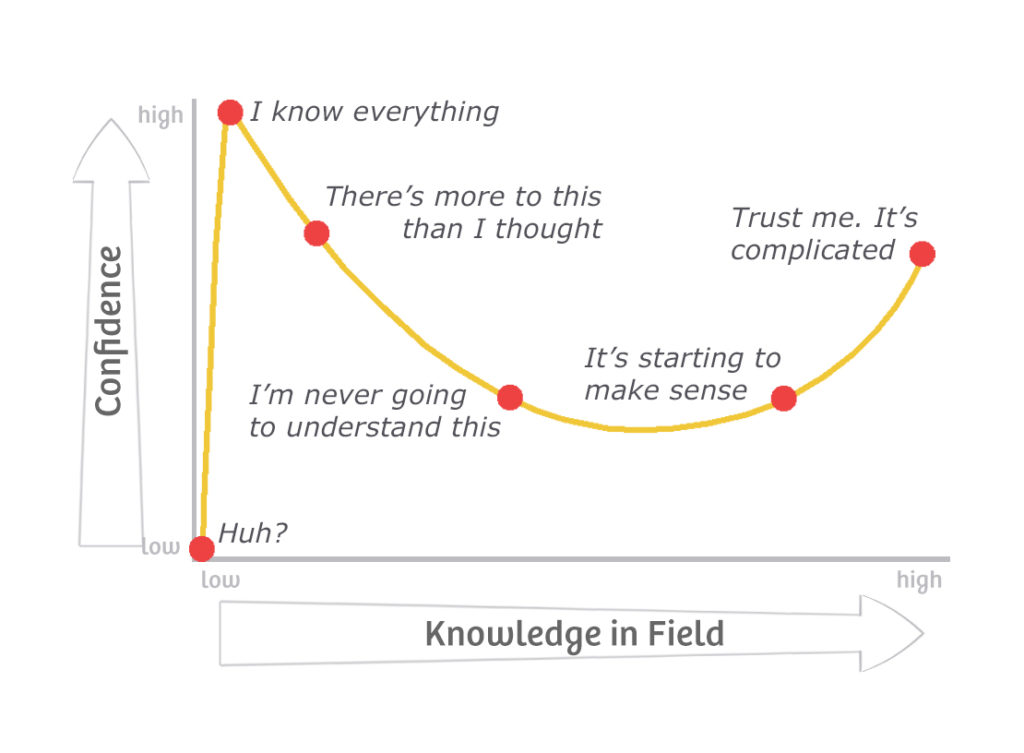
Building a family and a worldview
The New York Times article I mentioned earlier, which chronicles the life of a female Q-Anon believer, is interesting because of a number of factors. One, we can clearly see many of the personality traits outlined previously but what is more interesting, and worrying in some ways, is the case of building support, building a family. When people enter into these forums they start building and supporting their biases and this become self-fulfilling. Confirmation bias on steroids, stuck in the so-called echo chamber. But more than that is they build a community, a sense of attachment and bonding to each other. This becomes a support community, and this magnifies the belief because now changing one’s belief also means losing a whole support community a very human desire – particularly for those lonely people we mentioned. One can feel more on control, the believer of secret information, boosting self-esteem, and certain knowledge of the world in these forums. Again, we can see our base theory of human behaviour, SCOAP clearly coming back into play.
Self-Esteem – people build their self-esteem by being privy to secret information that the mainstream can’t see
Control – this gives a sense of control but also a lack of control (and hence motivation)
Orientation – people build orientation mechanisms with which to give security to themselves and others
Attachment – people build relationships and support each other to give comfort
Pleasure – is built through multiple mechanisms, through the above, but also small bursts of dopamine when “understanding the truth”, support for one’s theories, and knowing that one is the holder of secret information
If anyone gets this deep into the rabbit hole it is very difficult to bring them back. Their whole worldview will be built and supported by these beliefs, fed but their whole sense of self, and community also. Changing personal belief means a complete removal from this whole life system – hence the difficulties. Obviously, some of these theories will wane, develop, and frizzle out with time, but some will continue, or evolve into ever more complex and weird theories.
Conspiracy theorists have also, by the way, been shown to prefer uniqueness. That is the weirder or more selective the theory, the more likely they are to believe it – I see this as similar to being inducted into a secret group with secretive knowledge of the deeper “truth”. A powerful mechanism and attraction.
Pandemic and stress will make it worse
We have noted in other places how stress impacts the brain notably in how people behave and respond to the pandemic such as in last month’s “Shoot the Messenger” (lbR-2021-02). Simply put, if we look at our list of personality traits, or contributing factors to conspiracy theories, we can see that losing sense of agency will likely increase propensity to believe in conspiracy theories – this is precisely what has happened during this pandemic – it is out of our control.
Similarly, that the virus was developed in a lab in China combines multiple cognitive biases: out-group, negativity towards China, worldview of manipulative scientists. Geneticists who immediately decoded the genome of the virus know differently. This is the Dunning Kruger Effect at play – the specialist can read the genetic code and have followed its development and can through complex methods trace back its origins – but to many mere mortals with oversimplified views of the power of scientists the lab theory would seem reasonable (and by the way, why would these super smart scientists consider developing a virus that seems to disproportionally kill old people and those with pre-existing conditions).
Similarly, the effects of stress increase emotionality and shut down cognitive centres leading to increased propensity to irrational explanations. General distrust in government will also promote conspiracy thinking.
Yeah, yeah, but what can we do about it?
So obviously this has given us the data to show who is most susceptible to conspiracy theories and the natural mechanisms in the human brain that enable this, but can we do anything about it and is there any evidence to back this up? Well yes there is:
- Take action in personal lives – this may seem like a simple unrelated action, but some research has shown this. It increases one’s own self-efficacy, sense of control and agency. This then mitigates some of these factors that contribute to conspiracy theories. It is also no surprise that people who are in tough uncontrollable situations are more likely to fall prey into conspiracy theories.
- Personal stories – many conspiracy theories are built on anecdotes; the classic is the hobby scientist who is targeted by the pharmaceutical industry. If you can counter this with either good data or other personal stories, for example the small companies you know that have successfully developed drugs that undermine the big companies, this can reduce resistance. Do a google search for life science startups and you can see hundreds and thousands of companies that are challenging mainstream companies without being raided.
- Inconsistencies – in some conspiracy theories inconsistencies can be pointed out. It is good to point these out in a non-threating way to avoid defensiveness. Many conspiracy theories believe in inconsistent theories, for example, 5G antennas cause the coronavirus but also that the corona virus was developed in a lab in China. Gently ask them which theory is the one they believe in because they are inconsistent with each other. Preferentially relate to a simpler analogy that they can understand.
- Dunning Krueger effect – highlight the Dunning Kruger Effect. When I enter into discussions into the pharmaceutical industry, I ask those who appear less informed what they know about the regulations and reporting requirements and how these function – normally to a blank look. Outline the complexities of this – but I also admit pharmaceutical companies are not always angelic either.
- Outreach communication – this is an important one, many industries have bad outreach communication. At least to the general public. For example, in the development of the vaccine for coronavirus there was lots of reports in the scientific press, it was flooded as was the general scientific press. But how many clearly communicated and explanatory articles, video, cartoons, popular personalities giving succinct and well communicated descriptions. The answer is not enough. Something like the pandemic requires masses of simple clear communication. The same applies in all areas of science. Science has become ever more complex and sometimes the disconnect between the science and the general public, even the educated public is large. I know, I sit in this space.
- Involvement – getting involved with the community or in certain initiatives helps to increase self-efficacy and build connections. This can increase self-efficacy mentioned above, reduce loneliness, and give exposure to different viewpoints and personalities avoiding echo chambers.
- Show fake news tricks – research has shown that highlighting the tricks of misinformation and fake news, for example, over emotionalising single cases, makes people more immune to the effects and more rational in their thinking.
- Good news – in a world full of negative news, fear is high, acerbating the effects of negative emotionality and propensity for belief in conspiracies. A recent report on Covid19 news shows that there is a negative bias in reporting – something that has been observed in general in the news. Reporting on good stories shows us the world is in better shape than we may assume something Steven Pinker is often happy to point out.
- Education – teaching kids about fake news is a good thing and indeed some programmes have started mostly dealing with college populations for example, “Calling Bullshit” at the University of Washington.
- Into the lion’s den – Sunstein and Vermeule discuss strategies to counteract conspiracy theories in their 2009 paper and cite examples of “infiltration” into chat rooms to moderate and give alternative viewpoints. This is something that we can all contribute to gently nudging our conspiracy prone friends back towards reality and actively taking part in online discussion forums.
So, as we can see there is a lot going on – the conspiracy brain is a complex phenomenon. But we can sum it up with over-activation of natural mechanisms to detect patterns combined with negative worldview particularly if you are low on sense of control and have distance to power. Partisanship will colour the direction of this – but if you build a family with your conspiracies you may get stuck down the rabbit hole and never come out and that is a shame. Recessions, and crises will make these worse because control and orientation is lost to many.
However, if we can build a sense of control, create greater involvement for society, have better education and outreach programmes, and enable greater portions of society to be active in society, this will help to mitigate the worst excesses of conspiracy theories, however we are fighting a battle with the turbocharger of conspiracy theories: social media and the internet. And my, wouldn’t it be wonderful if we had responsible politicians who communicated clearly and in a unified way (alas now THAT is wishful thinking). I’m not sure whether I should be optimist or pessimistic, but I suppose if I were more pessimistic my chances of being a conspiracy theorist would be higher – and I’m not. So, let’s hope this will improve over time●
Pinker on realistic optimism:
https://www.nytimes.com/2018/11/19/science/steven-pinker-future-science.html

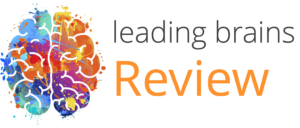


 Similarly, go to any sports match and if the referee makes an unpopular decision against a team their fans will not take long to suggest that he was paid off by the opposing team or some variation of that. When things don’t go our way, we tend to see evil intentions and manipulative forces at play. But even here we could argue that that is only in some persons and in some sports. A point to note here is that these conspiracy theories vary in extremes. Believing that the oil industry is trying to sabotage green energy initiatives is probably reasonably close to the truth, believing that the world is led by a few super rich families further from the truth, believing that the earth is flat defies all sorts of logic and sensory input (you can see the earth’s curvature in a commercial airliner), and believing that the world’s elite are alien lizard creatures in human disguise requires extreme levels of fantastical thinking.
Similarly, go to any sports match and if the referee makes an unpopular decision against a team their fans will not take long to suggest that he was paid off by the opposing team or some variation of that. When things don’t go our way, we tend to see evil intentions and manipulative forces at play. But even here we could argue that that is only in some persons and in some sports. A point to note here is that these conspiracy theories vary in extremes. Believing that the oil industry is trying to sabotage green energy initiatives is probably reasonably close to the truth, believing that the world is led by a few super rich families further from the truth, believing that the earth is flat defies all sorts of logic and sensory input (you can see the earth’s curvature in a commercial airliner), and believing that the world’s elite are alien lizard creatures in human disguise requires extreme levels of fantastical thinking.



 Type 1 conspiracies are therefore founded on a smaller or larger dose of the truth, but the true conspiracy types are built on over ascribing agency to complex dynamic systems. These are forgivable mistakes and one that can be countered by logical argumentation over time. However, people often slip deeper and deeper into the rabbit hole starting with reasonable type 1 conspiracy theory and slipping into type 2 and then type 3, from which there may be a point of no return – read on to see why, these people may slip over the event horizon.
Type 1 conspiracies are therefore founded on a smaller or larger dose of the truth, but the true conspiracy types are built on over ascribing agency to complex dynamic systems. These are forgivable mistakes and one that can be countered by logical argumentation over time. However, people often slip deeper and deeper into the rabbit hole starting with reasonable type 1 conspiracy theory and slipping into type 2 and then type 3, from which there may be a point of no return – read on to see why, these people may slip over the event horizon.


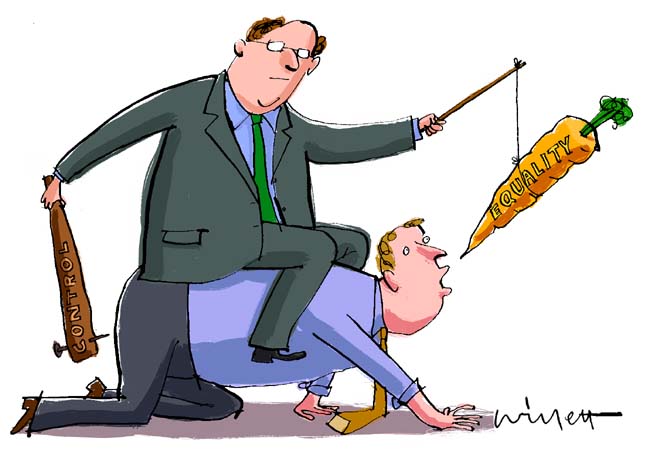
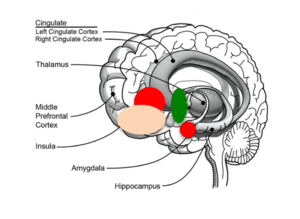
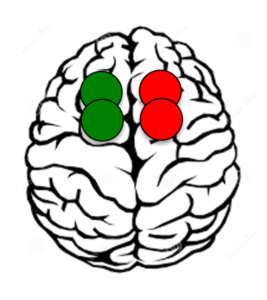


 Some of the clues may come in series of experiments on creativity. Tom Wujec is well known for his
Some of the clues may come in series of experiments on creativity. Tom Wujec is well known for his  But in the case of Battier and the marshmallow exercise these were already given: the team was clear and the team goals also. But an important aspect of the research, often glossed over, is that individual competence was a predictor of individual productivity, but inter-team support was a better predictor of team productivity. Simply put, helping others in the team enables the team to perform better. This also points to a word of warning to those arrogant high performers. Though they may individually perform well, the question is how much do they diminish the performance of others? In sales teams, which are often loosely bundled teams, arrogant high performers may do little damage and create a lot of profit, but for interdisciplinary teams looking to create new solutions, the team damage is likely to override their individual ability.
But in the case of Battier and the marshmallow exercise these were already given: the team was clear and the team goals also. But an important aspect of the research, often glossed over, is that individual competence was a predictor of individual productivity, but inter-team support was a better predictor of team productivity. Simply put, helping others in the team enables the team to perform better. This also points to a word of warning to those arrogant high performers. Though they may individually perform well, the question is how much do they diminish the performance of others? In sales teams, which are often loosely bundled teams, arrogant high performers may do little damage and create a lot of profit, but for interdisciplinary teams looking to create new solutions, the team damage is likely to override their individual ability.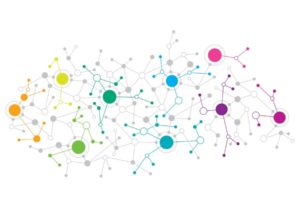 However, there is a problem with this because of the two concepts I mentioned previously. Namely synchrony can be seen as how similar in personality, or mindset, individuals are, but complementarity is the concept of having differing but complementary skills or personality traits. These are seemingly contrasting aspects. Though many leaders proudly claim they have diverse teams, our research shows they are not as diverse as they like to think, because they may be similar in multiple aspects of personality. Before I digress too far, I am sure you are keen to learn of what else we discovered in personality and effective teams.
However, there is a problem with this because of the two concepts I mentioned previously. Namely synchrony can be seen as how similar in personality, or mindset, individuals are, but complementarity is the concept of having differing but complementary skills or personality traits. These are seemingly contrasting aspects. Though many leaders proudly claim they have diverse teams, our research shows they are not as diverse as they like to think, because they may be similar in multiple aspects of personality. Before I digress too far, I am sure you are keen to learn of what else we discovered in personality and effective teams.